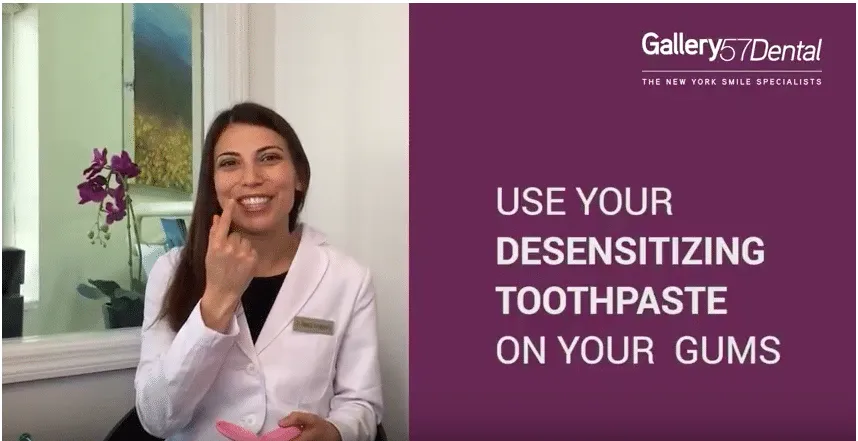Understanding Dentist Whitening Trays
Dentist-provided whitening trays offer a safe and effective method for brightening your smile from the comfort of your home. Unlike over-the-counter options, these trays are custom-made to fit your teeth precisely, ensuring optimal gel contact and minimizing the risk of gum irritation. This guide provides a comprehensive 101 on how to use dentist whitening trays, from understanding what they are to maintaining your bright smile long after treatment. Using professionally-made whitening trays provides more consistent and often faster results than other whitening methods. They’re also designed to be used with stronger whitening agents, making them a more effective treatment for stubborn stains and discoloration.
What Are Dentist Whitening Trays
Dentist whitening trays are custom-fitted, clear plastic molds that are designed to hold a professional-strength whitening gel against your teeth. Your dentist will take an impression of your teeth, which is then used to create these trays. Because they’re custom-made, they fit snugly, ensuring even distribution of the whitening agent and minimizing the risk of leakage or irritation to your gums. The trays are an essential part of the teeth whitening process. It is important to understand that whitening trays are far more effective than generic alternatives, as they’re tailored to your unique dental structure.
Materials Used in Whitening Trays
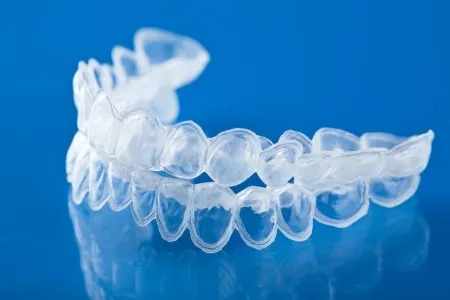
The trays themselves are usually made from a thin, flexible, and transparent plastic material. This material is designed to be comfortable in your mouth and to allow the whitening gel to work effectively. The gel used in these trays typically contains a bleaching agent, such as hydrogen peroxide or carbamide peroxide, at a higher concentration than you’d find in over-the-counter products. This is one of the main reasons why dentist-provided whitening is more effective. The concentration of the agent can range depending on your needs and the degree of tooth discoloration that is being treated.
How Whitening Trays Work
The whitening process involves the bleaching agent in the gel penetrating the enamel of your teeth and breaking down the stain molecules. The custom-fitted tray ensures the gel maintains direct contact with your teeth, maximizing the bleaching effect. The duration of the treatment and the strength of the gel vary depending on the severity of the discoloration and your dentist’s recommendations. Usually, you wear the trays for a specific amount of time each day, often for a few hours or overnight, until you achieve your desired level of brightness. This gentle yet effective method gradually lightens your teeth, resulting in a more radiant smile.
Getting Ready to Use Your Whitening Trays
Consulting Your Dentist
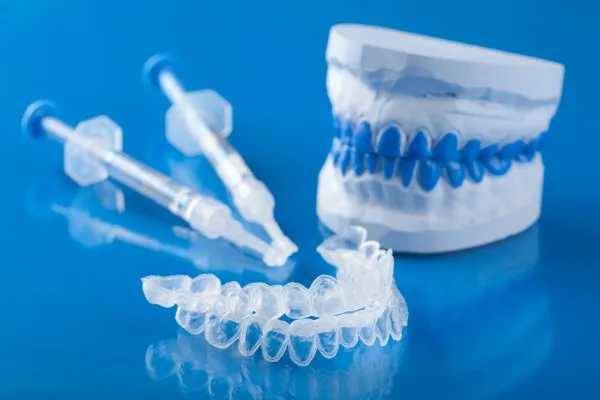
Before you begin using whitening trays, schedule a consultation with your dentist. They will assess your overall oral health, identify any underlying issues, and determine if whitening is the right option for you. This step is crucial because the effectiveness of the whitening process can vary based on the condition of your teeth. Your dentist can also address any existing dental work and provide specific instructions tailored to your needs. They may also take before-and-after photos to track your progress and make adjustments to your treatment plan if necessary. This professional guidance ensures the safest and most effective approach to teeth whitening.
Examining Your Teeth
Your dentist will thoroughly examine your teeth and gums to check for cavities, gum disease, or any other dental problems that may need to be addressed before whitening. Whitening treatments are generally not recommended for individuals with untreated dental issues. If any are detected, your dentist will treat them first. This approach safeguards your oral health and maximizes the effectiveness of the whitening process. Additionally, your dentist may advise against whitening if you have sensitive teeth, as the process could exacerbate the sensitivity. This examination allows for the development of a personalized treatment plan.
Creating Your Whitening Trays
Once your dentist determines that you’re a good candidate for teeth whitening, they will create custom-fitted trays for you. This process typically involves taking an impression of your teeth. This impression is then sent to a dental lab, where the trays are fabricated to precisely fit your teeth. The precise fit of the trays is crucial for even whitening and to prevent the whitening gel from leaking onto your gums, which could cause irritation. When your trays are ready, you’ll return to the dentist to pick them up and receive detailed instructions on how to use them. They’ll also provide you with the professional-strength whitening gel.
Step-by-Step Guide How to Use Your Whitening Trays
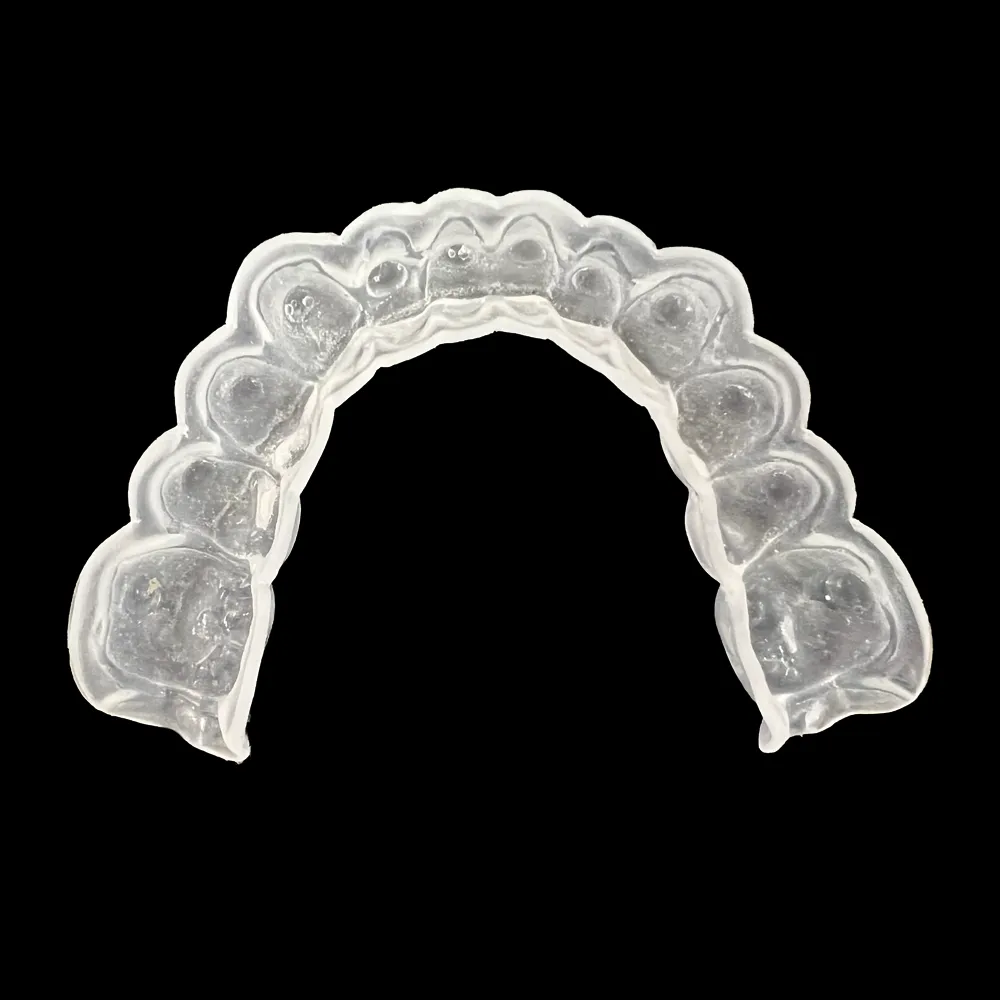
Preparing the Trays
Before each use, clean your teeth thoroughly by brushing and flossing. This removes any surface debris and allows the whitening gel to work directly on your enamel. Rinse your mouth with water to remove any residual toothpaste. Next, carefully inspect your whitening trays to ensure they are clean and dry. Place a small amount of the whitening gel, as instructed by your dentist, along the inner walls of the tray, where it will come into contact with your teeth. Be careful not to overfill the trays, as this can cause the gel to leak and irritate your gums. Less is often more, so follow your dentist’s guidance to avoid any issues.
Applying the Whitening Gel
Follow the instructions provided by your dentist regarding the amount of whitening gel to apply. Typically, a small bead of gel is placed along the inner front surface of the tray, where it will meet your teeth. Avoid applying too much gel, as this can lead to excess gel seeping out of the tray and potentially irritating your gums. The amount of gel needed will vary depending on the tray design and the strength of the whitening agent. Ensure the gel is evenly distributed across the tray to ensure comprehensive coverage of your teeth. If gel spills onto your gums, gently wipe it away with a clean cotton swab.
Inserting the Trays

Carefully insert the tray into your mouth, making sure it fits snugly over your teeth. Use gentle pressure to ensure the tray is properly seated and that the gel is evenly distributed across the tooth surfaces. Remove any excess gel that may have seeped out, either with a clean finger or a cotton swab. The fit should be comfortable but secure, avoiding any unnecessary pressure that could cause discomfort. You may want to start with shorter wear times and gradually increase the duration as directed by your dentist. Any discomfort should be reported to your dentist.
The Whitening Process
Once the trays are properly inserted, follow your dentist’s instructions for the recommended wear time. This is typically for a few hours per day or overnight, depending on the strength of the whitening gel and the desired results. During this time, the whitening agent will work to break down stains and discoloration on your teeth. While wearing the trays, it is best to avoid eating or drinking anything other than water. This will prevent the teeth from becoming re-stained and potentially affect the efficacy of the whitening process. Consistency is key to achieving your desired results, so adhere to the dentist’s instructions to get the most out of your whitening treatment.
Removing the Trays and Cleaning
Once you’ve completed the recommended wear time, remove the trays from your mouth. Rinse your mouth thoroughly with water to remove any residual gel. Then, clean the trays by rinsing them with cool water and gently brushing them with a soft toothbrush. Avoid using hot water, as this could warp the plastic. Store the trays in a clean, dry place, away from heat and direct sunlight. This will help prevent the trays from degrading and ensures they are ready for your next treatment. Proper cleaning and storage ensure the trays remain effective and hygienic throughout the whitening process.
Tips for Optimal Results

Following Instructions
The most important tip is to follow your dentist’s instructions precisely. This includes adhering to the recommended wear time, the frequency of use, and any specific guidelines for the whitening gel. Ignoring these instructions may lead to suboptimal results or increase the risk of side effects like gum irritation or tooth sensitivity. Consistency is essential for achieving the best results, so making the treatment a regular part of your routine is very important. If you have any questions or concerns, don’t hesitate to contact your dentist for clarification. They are there to ensure the process is safe and effective.
Maintaining a Good Oral Hygiene
Maintain a strict oral hygiene routine throughout the whitening process. Brush your teeth at least twice a day with fluoride toothpaste and floss daily to remove plaque and food particles. This will help maximize the effectiveness of the whitening and prevent new stains from forming. Consider using a whitening toothpaste, as recommended by your dentist, to further enhance the brightening effect. Regular dental check-ups and professional cleanings are also essential to maintain the health and appearance of your teeth. Proper oral hygiene ensures your teeth remain bright and healthy.
Managing Sensitivity
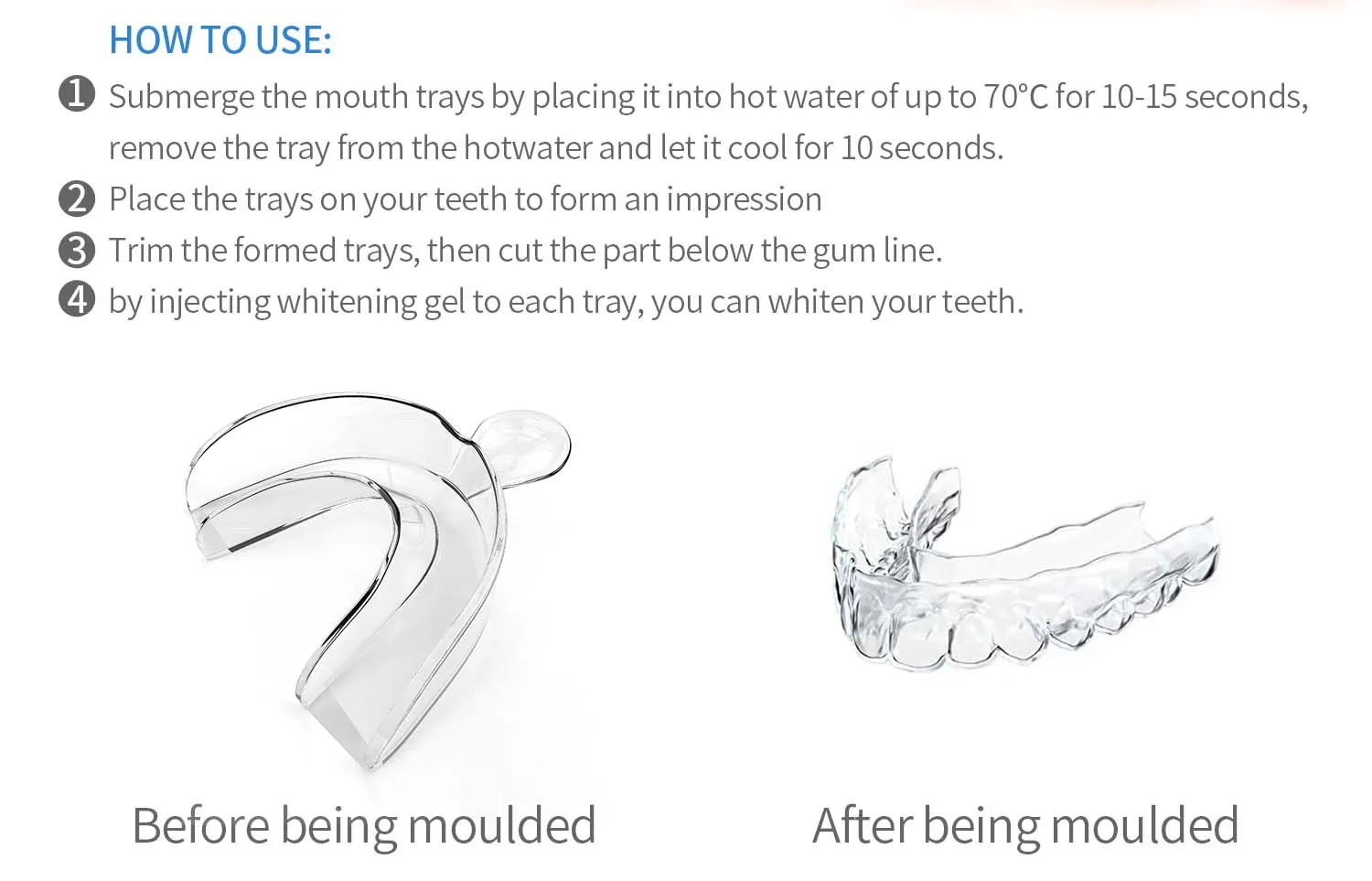
Tooth sensitivity is a common side effect of teeth whitening. If you experience any discomfort, your dentist may recommend using a desensitizing toothpaste containing potassium nitrate or fluoride. You can use this toothpaste for a couple of weeks before starting the whitening process to build up tolerance. You could also use the toothpaste during the treatment and for a week or two after. Your dentist can also recommend other strategies, such as reducing the wear time or the concentration of the whitening gel. Be sure to communicate any sensitivity you experience to your dentist promptly so they can adjust your treatment plan as needed. Always consult your dentist if you have any concerns about sensitivity.
Potential Side Effects
While dentist whitening trays are safe, some side effects are possible. The most common side effects are tooth sensitivity and gum irritation. These are usually temporary and subside after you discontinue the whitening treatment or use a desensitizing toothpaste. Other side effects may include a sore throat or mild irritation to the soft tissues of the mouth. If you experience any severe or persistent side effects, contact your dentist immediately. They will be able to assess the situation and recommend appropriate solutions. It is also recommended to follow instructions to limit any risks.
Maintaining Your Bright Smile
After-Treatment Care
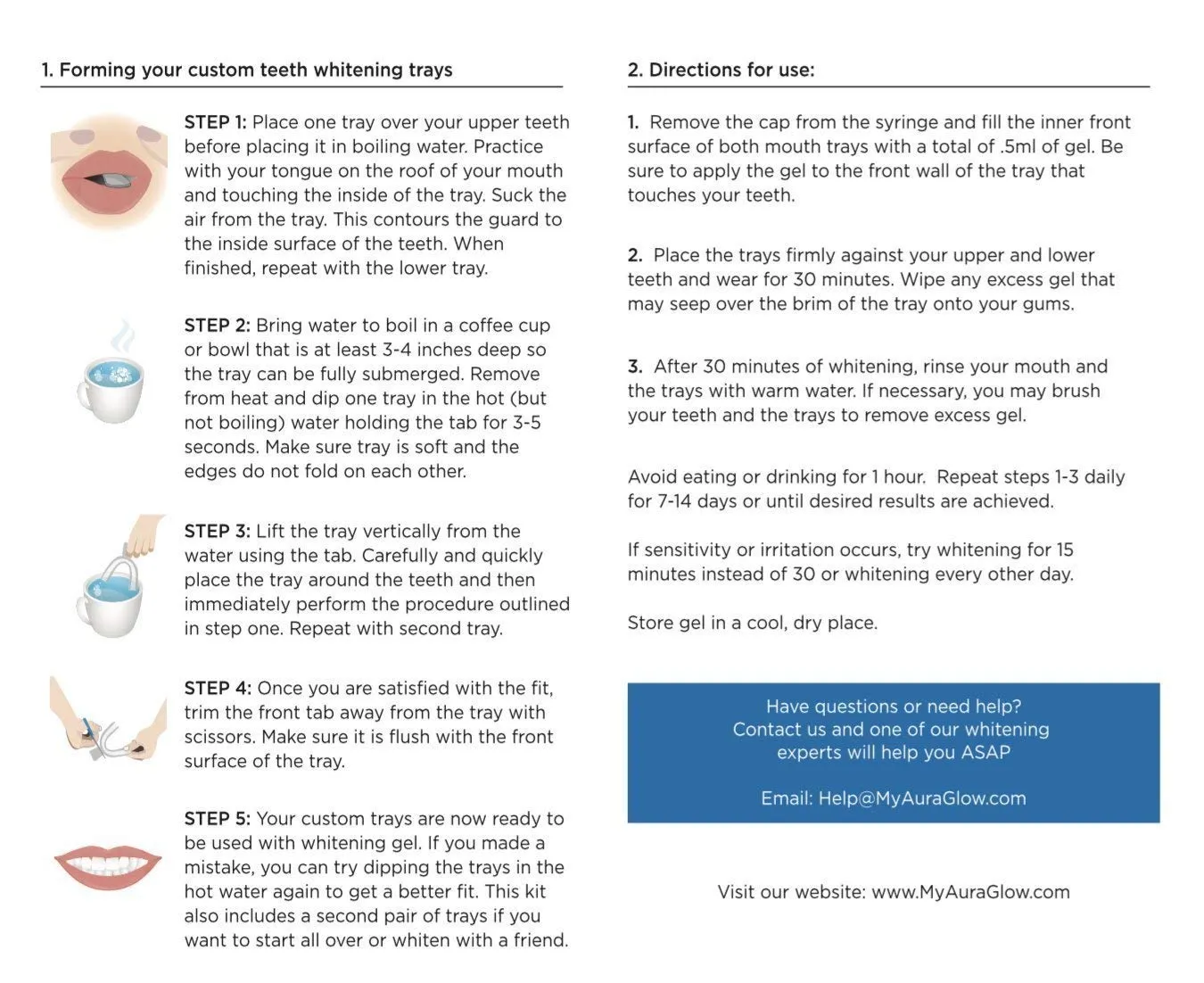
After you’ve achieved your desired level of brightness, there are steps you can take to maintain your results. Avoid consuming foods and drinks that can stain your teeth, such as coffee, tea, red wine, and dark berries, especially in the first few days after the treatment. If you do consume these items, brush your teeth or rinse your mouth with water immediately afterward. Using a straw when drinking staining beverages can also help minimize contact with your teeth. Avoid smoking, as tobacco use can quickly stain your teeth and compromise the whitening results. Following these practices will help prolong your bright smile.
Regular Dental Check-ups
Continue to schedule regular dental check-ups and cleanings with your dentist. Professional cleanings can remove surface stains and maintain the overall health of your teeth. Your dentist may also recommend touch-up whitening treatments to maintain the brightness of your smile. The frequency of these touch-ups will depend on your individual needs and lifestyle. Routine check-ups allow your dentist to monitor your oral health, address any new issues promptly, and keep your smile looking its best. Regular dental visits are an essential part of maintaining your bright and healthy smile.
Lifestyle Choices for a Long-Lasting Effect
Making certain lifestyle choices can help extend the longevity of your teeth whitening results. Limit your consumption of staining foods and beverages, and practice good oral hygiene habits. Consider using a whitening toothpaste or mouthwash to further enhance and maintain the brightness of your teeth. If you smoke, quitting can have a significant positive impact on the longevity of your results. Using your whitening trays for occasional touch-up treatments, as recommended by your dentist, can also help keep your smile radiant. By incorporating these habits into your daily routine, you can enjoy a brighter smile for longer.
